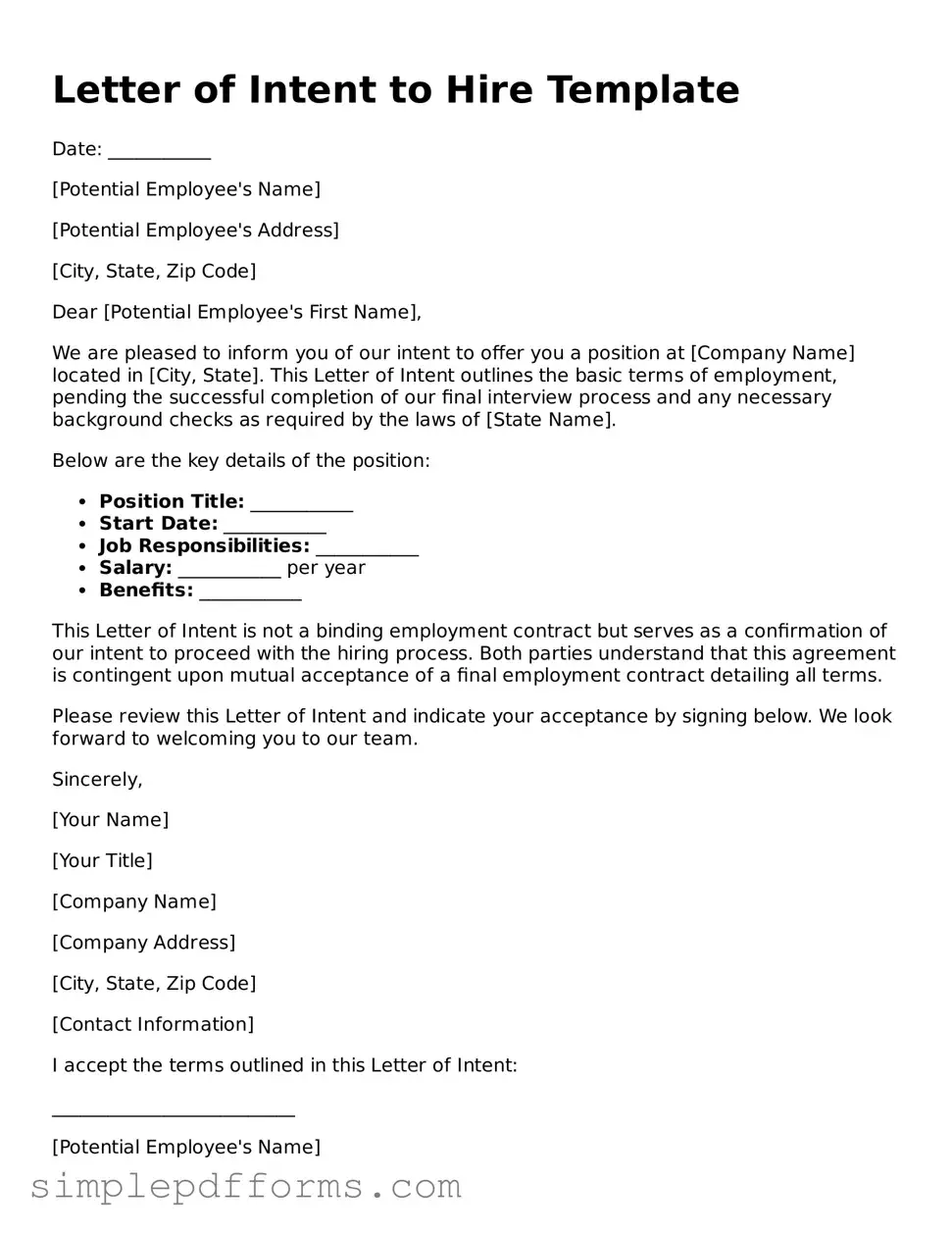Letter of Intent to Hire Template
Date: ___________
[Potential Employee's Name]
[Potential Employee's Address]
[City, State, Zip Code]
Dear [Potential Employee's First Name],
We are pleased to inform you of our intent to offer you a position at [Company Name] located in [City, State]. This Letter of Intent outlines the basic terms of employment, pending the successful completion of our final interview process and any necessary background checks as required by the laws of [State Name].
Below are the key details of the position:
- Position Title: ___________
- Start Date: ___________
- Job Responsibilities: ___________
- Salary: ___________ per year
- Benefits: ___________
This Letter of Intent is not a binding employment contract but serves as a confirmation of our intent to proceed with the hiring process. Both parties understand that this agreement is contingent upon mutual acceptance of a final employment contract detailing all terms.
Please review this Letter of Intent and indicate your acceptance by signing below. We look forward to welcoming you to our team.
Sincerely,
[Your Name]
[Your Title]
[Company Name]
[Company Address]
[City, State, Zip Code]
[Contact Information]
I accept the terms outlined in this Letter of Intent:
__________________________
[Potential Employee's Name]
Date: ___________
